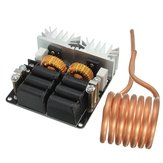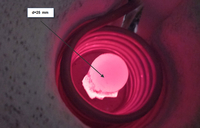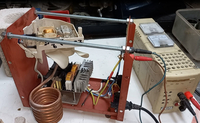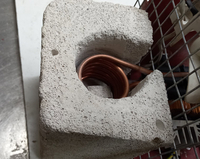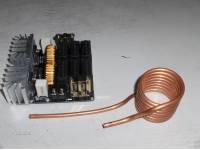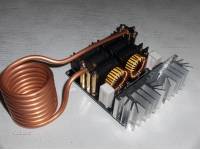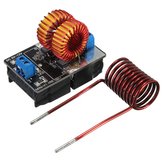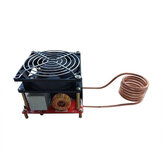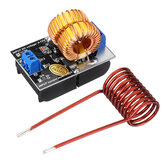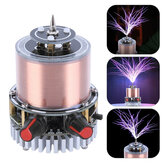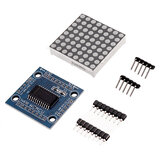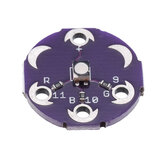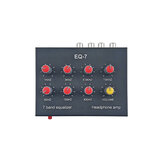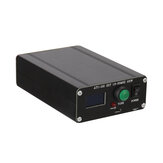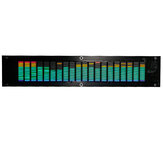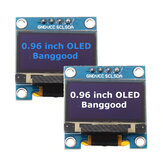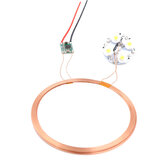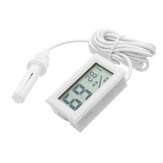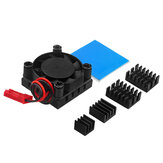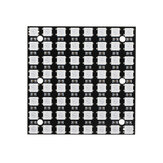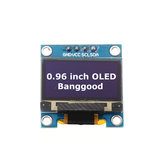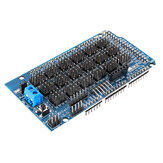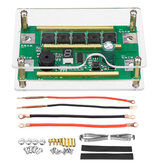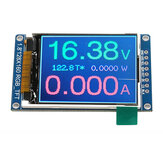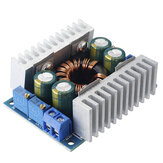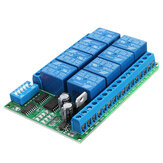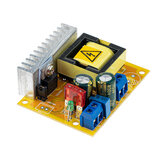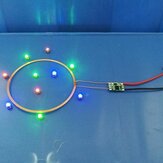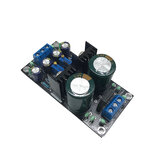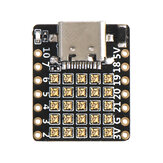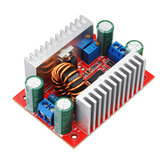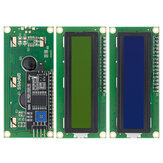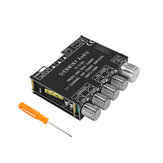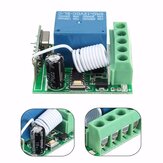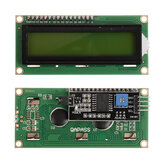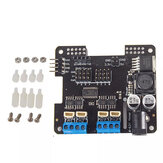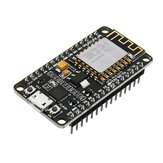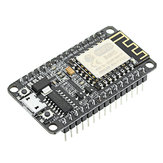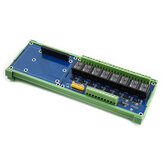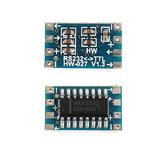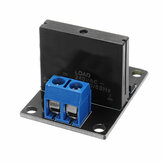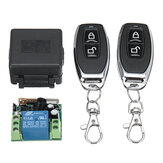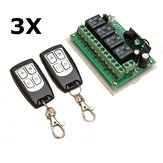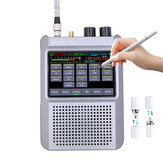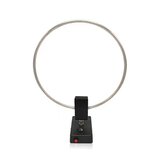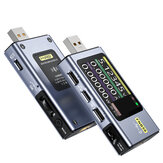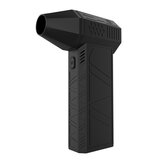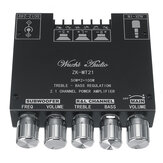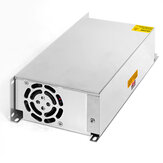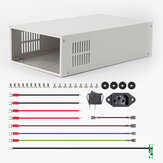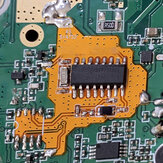Módulo de calentamiento por inducción de alta frecuencia Geekcreit® Low ZVS 12-48V 20A 1000W
Comentarios de Clientes
- Todos los comentarios (261)
- Imagen (25)
- Video (0)
Una parte de la reseña se ha traducido automáticamente.
-
 mannuVIP3RO15/08/2017
mannuVIP3RO15/08/2017It is an impressive induction heater working at 85 kHz frequency. I have added a little improvements : cooper contact for coil, a fan cooler and refractory sponge-brick as coil / crucible support. I have tested with a switching power supply with DC output of 24V /20A using a graphite crucible (33mm diameter and 30mm height); the current was aprox. 18A and the crucible has reach 900C in 3-4 minutes; first i have start the power supply then i have connected the induction heater. i recommend this induction heater.
ComentariosMostrar original -
26/03/2016
Coil ID 1.700", OD ~2.160. Board (overall, including heat sinks) 4.400" x 3.950" x 1.520". All dims are approximate and rounded up to the next number that made any sense. Input voltage is marked for polarity (- terminal only) but neither voltage nor amperage are labeled. Again, like with the smaller unit, if you were hoping to receive some sort of documentation, you are out of luck. The copper tubing is not insulated so, despite the generous size of the coil, the electrical path will be quite short with the whole coil acting as if there is only a 1/8th turn unless you make the effort to isolate the tubing yourself. I've made no attempt to power this up yet, so all I can pass along are the physical attributes.
Comentarios (2)Mostrar original -
16/09/2022
Muy dispositivo de Dios. El secreto es que necesitas una fuente de alimentación grande. Primero usé un ps casero de dos transformadores del horno de microondas 40 v 25 A. Más tarde usé un ps de un transformador 25 v y muchos muchos muchos Amplificadores de una máquina de cine de 1970. Me las arreglé para conseguir rojo un trozo de hierro de 25 mm de diámetro en 90 segundos. Una buena corriente es 20-32 V 15 A. No utilice más de 20 A durante mucho tiempo para no quemar los mosfets. La inducción comienza después de 12 v. Usé un ventilador de un horno de microondas para mantener el disipador de calor del mosfet fresco. En el ps grande usé un rectificador bridgfe de 35 A con disipador de calor grande y afan de la computadora (12 v).Don' poner artículos con diámetro más de 3 cm y más tha 4-5 cm de largo para mantener los amperios menos de 20.Si usted utilizar un regulador de voltaje con triac en el primario del transformador el voltaje debe ser más de 150 v para no quemar el puente.Es mejor utilizar un variac para tener siempre una onda sinusoidal completa en cada voltaje que necesita.
Comentarios (2)Mostrar original -
26/11/2016
Szybka wysyłka, szybko grzeje, na zdjęciu zasilacze serwerowe do zasilania. Przy większych mocach potrzebny wiatrak chłodzący i chłodzenie wodą. Polecam.
ComentariosMostrar original -
 C4WRCFR29/03/2018
C4WRCFR29/03/2018Voici un petit système de chauffage à induction très compact et pratique qui va m'être très utile pour mes bricolages, il me reste a lui faire un boitier
ComentariosMostrar original -
17/12/2016
This very functional inductive heater has become a hot item. You can do many things with this system. Because of high current/stability. best to use 4 X 12 VDC leadgel batteries of minimal 12 AH (better 17AH) IN SERIE to feed this system Use one of the batteries to power a fan for the electronic parts too. Switshing powersupplies are less /not suitable, the fast slope of the drained current can interfere / not starting oscillation. So be wise , use as alternative a 1KW 35VAC ringwound trafo, rectifiers and a lot of switshingproof elco's in parallel. A Variac can be used but start up in full mode and than reduce voltage. When cooling s OK and powersupply is sufficient the only big problem is to start the oscillationprocess (It is self oscillating). !000Watt is quite a lot, the smaller ones I have bought first are already nasty heaters wich can heat up a nail in seconds.
Comentarios (1)Mostrar original -
27/12/2021
El producto es de muy mala calidad. Transistores en los radiadores de refrigeración sin compuesto térmico, un transistor no se ajusta al radiador de refrigeración en absoluto. Un extremo del arrollamiento del escoria no está soldado en absoluto en la placa. Al encender el modo de ahorro zadraschiem transistor.Ocht una muy mala impresión del producto.
ComentariosMostrar original -
 tokrzychVIP1PL02/06/2017
tokrzychVIP1PL02/06/2017Nagrzewnica działa dobrze , wymaga chłodzenia przy dłuższej pracy. Kiedy mam już podpięte zasilanie pod zasilacz i włączam go to nagrzewnica nie startuje za każdym razem . Ale jak podpinam przewód zasilający do włączonego już zasilacza to działa od razu OK . Widocznie powolny czas narastania napięcia przeszkadza w pewnym starcie nagrzewnicy.Tu na zdjęciu tak na próbę dałem 28v i 5,7A ,4mm gwoźdź się rozgrzał w jakieś 20-25s. Na luzie pobiera w tym momencie 28v i 3,6A . Dzisiaj przyszła więc to takie pierwsze uruchomienie
Comentarios (1)Mostrar original -
 igortVIP2CA14/04/2016
igortVIP2CA14/04/2016Used the heater to silver braze a very small SS tube to a much larger SS part. This was a problem with a torch since the parts were so dissimilar in size. The heating with the induction heater was very uniform and did an excellent job. Overheating of the flux was a problem with the torch, but not with the induction heater. Heating cycle was about 2.5 minutes.
ComentariosMostrar original -
05/04/2018
Estoy haciendo unos experimentos, usando el circuito Geekcreit ZVS dentro de otro ideado por Tesla. Ya os contaré como me fue. Creo que con este circuito resuena con intensidad suficiente para hacer funcionar el circuito diseñado por Nikola Tesla. la Patente 685.957 : Método de utilización de la Energía Radiante la Patente 512.340 donde una genialidad de Nikola: la Bobina Bifilar tiene la clave de la resonancia armónica, es como condensador de flujo electro-plasmático, capaz de enfriar la energía de la Red Eléctrica: separar magnetismo y electricidad, resultando que el coseno de Phi de la energía consumida tiende a 0 significa que podemos ahorrar en consumo un 100 % y tener una nueva forma de energía eléctrica fresca, no peligrosa, saludable y natural.
ComentariosMostrar original
